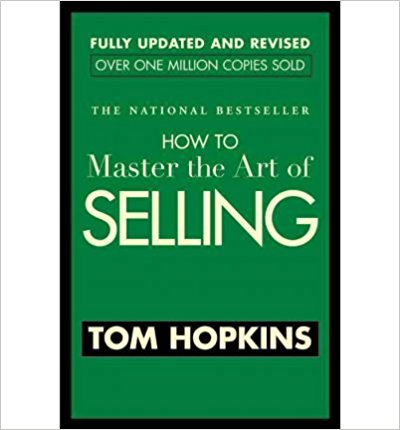Whether you are a start-up or an established business you cannot assume that because the business is there customers will just turn up.
Developing effective selling strategies is vital for organisations of all sizes. Even if you are a non-profit organisation. As a non-profit body you will need to sell ideas, products and services to others including service users, staff and funding authorities.
The organisation's marketing strategy defines the product, the sales objectives, pricing policy and the target markets. Marketeers are also responsible for advertising and promotion, new product development and market research.
The sales strategy defines how the sales volume and profit targets will be achieved. It will say whether sales are direct with your own sales force and representatives or indirect using distributors and on-line systems. Most businesses will have a mixture. There are also different selling techniques for B2C and B2B markets. Selling multi million capital goods can take years of work. The sales team will also be concerned with distribution channels e.g. wholesale or retail. They will also be networking and attending trade shows and exhibitions - all of which needs to be planned and budgeted for. The sales team are key to establishing good customer relations which are essential for referrals and repeat purchase. What's more as the sales team is at the 'coal face' they play an important role in gathering market and competitor information. Sales skills training is a necessary element. This does not mean using the techniques employed by double glazing, insurance and car salesmen - unless, of course, if you are in those trades.
If an entrepreneur or his sales team lack the necessary skills to initiate and close a sale, the company can lose money and ruin its reputation. Whether you sell mattresses, office equipment or copywriting your selling strategies will influence whether your customers decide to make a purchase from you or your competitor.
From preparing yourself and clarifying your objectives to realising the importance of listening, learn how to improve your negotiating skills.
Negotiating a sale checklist
- Before the negotiation begins, prepare yourself; aim to appear keen to do the deal, but not desperate.
- Clarify your objectives (e.g. price, volume or a quick sale) and how important the deal is to you.
- Find out what the customer wants. What features or extras do they value, what are their priorities - price, service or delivery?
- Make sure the person(s) you are meeting have buying authority. If they are one level below use the meeting to gain more information and then agree a meeting date with the main buyer.
- Research the customer’s position: how urgently they need your product, what they can afford and what alternatives the competition is offering.
- Assess the value of your offering to the customer: the benefits it offers, the problems it solves for them, the alternatives it replaces.
- Identify the strengths and weaknesses in your proposal and plan your strategy; aim to reach a deal which will suit the customer as well.
- Decide what could be negotiable; try to identify concessions which would cost you little but the customer would value.
- Consider the potential impact on other deals and other customers of any concessions you make.
- Clarify your terms and conditions from the start of the negotiation.
- Pitch your opening price high; explain how the value in what you are offering justifies the price.
- Agree what the negotiating points are.
- Concentrate on asking questions and listening; fend off questions aimed at discovering your own negotiating position.
- Test the strength of any concessions the customer asks for; ask whether they are deal-breakers, or what alternatives there are.
- Look for reciprocation on any concessions you make: for example, an increased order size in exchange for a discount.
- Summarise each point as it is agreed; shake hands on the deal when all the points have been covered, and follow up with a written agreement.
Closing the sale I have heard stories about sales and marketing people making amazing presentations and at the end failing to close or attempting to close a deal. What a waste? There are many books on the art of 'Closing sales deals'. Tom Hopkinks in his excellent book 'How to Master the Art of Selling talks about many tried and tested closing techniques. We have cobbled together some sales closing tips from several sources:
- Create a sense of urgency. Try to convince the customer that your product is needed now.
Do not state that a product is only available for a limited time if it is not. This could be illegal.
- Try using these questions as the sales presentation develops:
- After giving any part of your presentation, you can ask, “Are you with me so far?" You can vary this with, “How does that sound?” or, “Do you see what I mean?” and, “Does that make sense?”. If necessary build these into your script - of course, hidden from the customer
- Anytime you give a benefit, ask, “How would you use that?" or, “Could you use that?" or, “Would that work for you?” or, “Would that be of benefit in your situation?”
- Another good question to ask throughout your presentation is, “Do you have any questions so far?". You must use this question often
- Trial closes are always good – “Does this seem to be the kind of solution you are looking for?" or, “How is this sounding so far?” or, with a smile in your voice, “Am I getting close to having a new client yet?”
- When you're done with your presentation, always ask, “What haven’t I covered yet that is important to you?"
- Always listen carefully to their answers and how they say it. Always allow a few seconds before resuming the presentation - they may have a few more things to say. Listening and not talking over them is key.
- If the customer makes buying signals - STOP SELLING
- Typical buying signals might be: “Can you deliver next month?”; “If we buy more than one is there a saving?”; “I am sure we could save money with it"
- When you resolve the last objection make it conditional on closing the sale. For example, ‘If we can make it in blue, will you place the order now?’
- Once you have asked for the sale, stop talking. Your silence encourages the customer to think things through and reach a decision.
- Agree actions and confirm these in writing, including timescales
Developing a selling strategy can be an involved task. Especially for a new venture There may be skills gaps in the management team. Generally it needs to hand in glove with developing a marketing strategy. At Deve we have knowledge, skills, experience and processes to help you design an objective selling strategy To discuss a project of for more information or just to stay on our list (never passed on) submit your details


